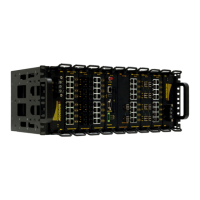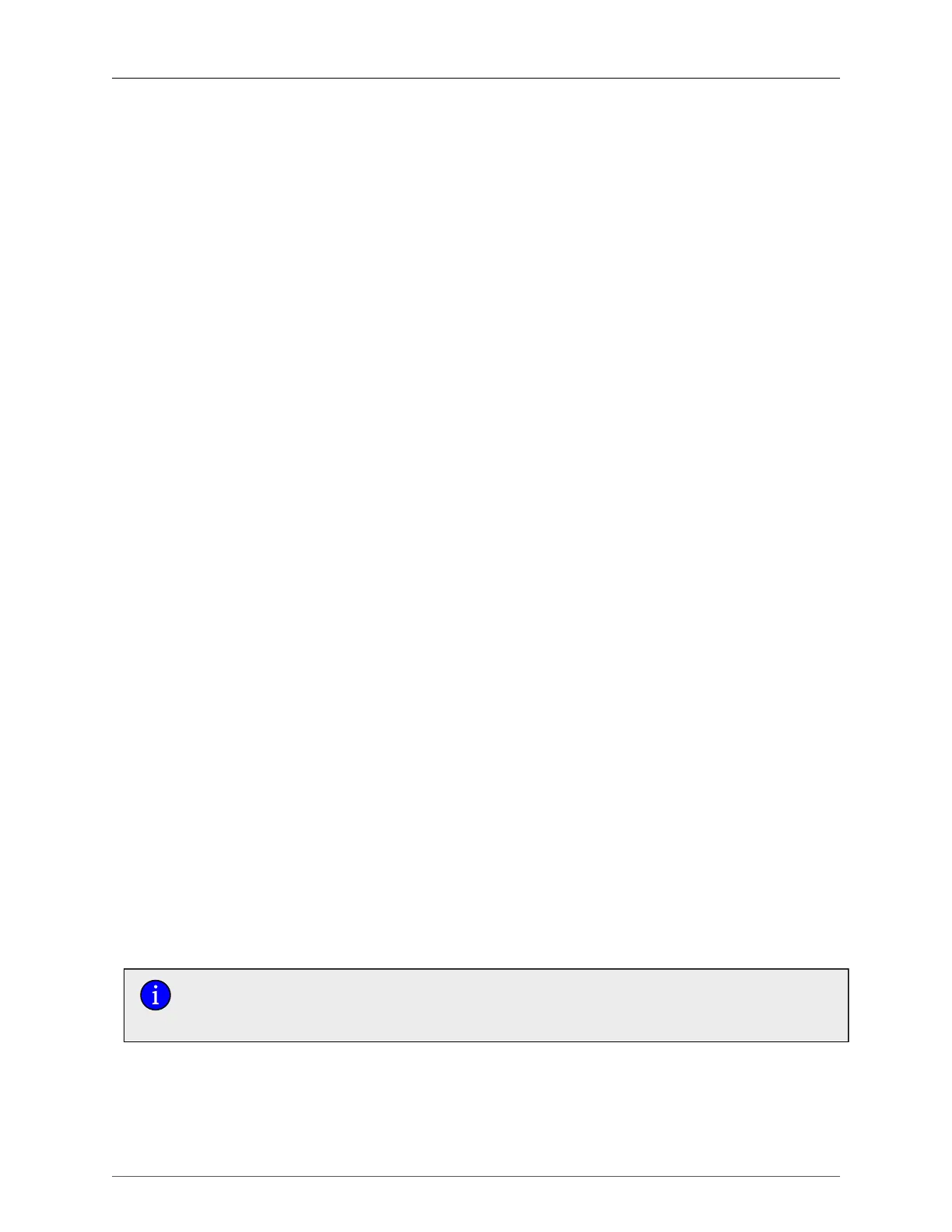30. Tunnelling
ROX™ v2.2 User Guide 318 RuggedBackbone™ RX5000
GOOSE Packets received from the network are stripped of their network headers and forwarded to
Ethernet ports configured for the same multicast address. The forwarded frames contain the MAC
source address or the originating device, and not that of the transmitting interface. The VLAN used will
be that programmed locally for the interface and may differ from the original VLAN. The frame will be
transmitted with the highest 802.1p priority level (p4).
Packets received from the network will also be forwarded to any other remote daemons included in
the group.
To enable forwarding for GOOSE packets, configure a generic Layer 2 tunnel to listen for GOOSE
packets on one VLAN and forward them to a second VLAN. To configure the generic Layer 2 tunnel
for this operation, set the following for the tunnel:
• Ethernet Interface: select the VLAN on which the GOOSE packets orginate.
• Ethernet Type: set as 0x8868. 0x8868
• Remote Daemon: select the VLAN to which to forward the GOOSE packets.
30.3.2. Generic Layer 2 Tunnel Fundamentals
The Layer 2 Tunnel Daemon also supports a generic mode of operation based on the Ethernet type of
Layer 2 data traffic seen by the router. Multiple tunnels may be configured, each one with:
• Ethernet type
• Tunnel ingress (Ethernet interface)
• Tunnel egress (either another locally connected Ethernet interface, or the remote IP address of
another Layer 2 Tunnel daemon instance running on another RuggedBackbone™)
30.3.2.1. Generic Tunnel Implementation Details
For each tunnel configured, the daemon monitors the specified Ethernet interface for Ethernet (Layer 2)
frames of the specified type. If the configured egress is another local Ethernet port, frames are simply
forwarded on that port, unmodified.
If the configured tunnel egress is a remote IP address, the daemon encapsulates the frames and
forwards them to that address, where a corresponding Layer 2 Tunnel Daemon must be configured to
receive tunneled frames for local retransmission. Encapsulation headers are stripped in order that the
retransmitted frames are identical to those received at the tunnel ingress.
Other notes:
• Source and destination Ethernet MAC addresses are preserved, whether they are forwarded locally
or remotely.
• Packets received from the network will also be forwarded to any other remote daemons included in
the group.
• The UDP port number for inter-daemon communication must be the same throughout the network
• Enabling Generic L2 Tunneling on an Ethernet interface does not interfere with other (Layer 3)
networking configuration on that interface, e.g. firewall rules, IP routing, etc.
Avoid network configurations where the daemons can form a traffic loop. The simplest
such configuration is a triangle network where each daemon forwards to two other routers.
Frames arriving at one router will start cycling in clockwise and counterclockwise directions.
To avoid such “packet storms”, frames forwarded to the network are tagged with an initial time to live
count. The count is decremented at each relay to the network and prevents the frame from being relayed
indefinitely.

